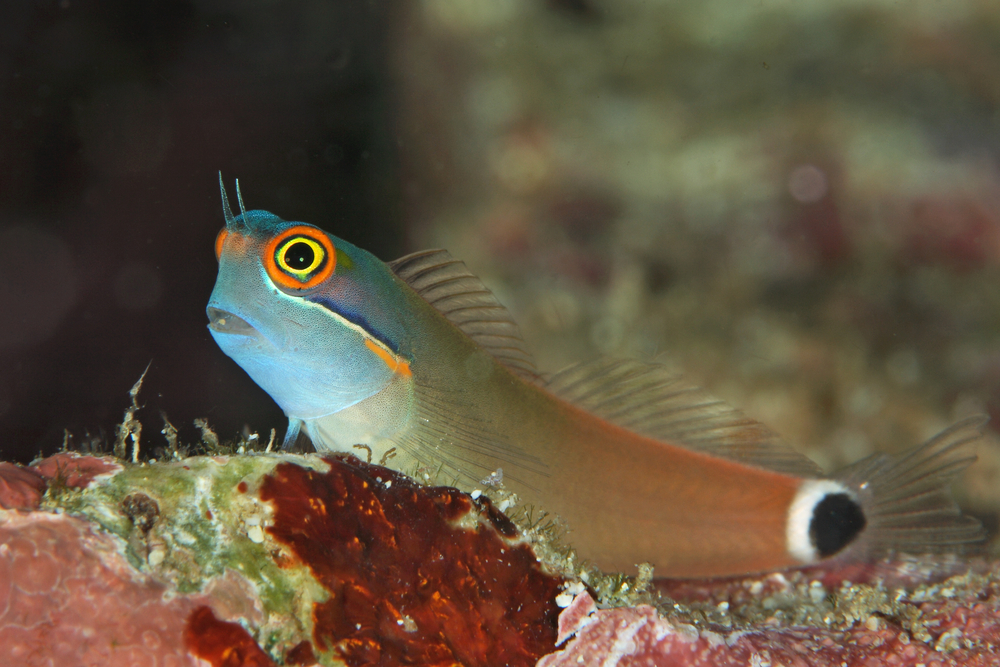Spot Tail Blenny
A unique and fascinating addition to any marine aquarium, the spot tail blenny is a small, colorful fish that has become increasingly popular among hobbyists. Known for its playful and curious personality, the spot tail blenny can quickly capture the hearts of fishkeepers. But before adding this fish to your tank, there are some things you should know to ensure its proper care and wellbeing.
Pain Points
One of the challenges of keeping a spot tail blenny is that it requires a well-established, mature aquarium. These fish often have a difficult time adjusting to new environments, so it's best to introduce them to a tank that has been running for at least six months. Another potential issue is that they can become territorial with other fish, particularly other blenny species, and may act aggressively towards them.
Target of spot tail blenny
The spot tail blenny, also known as the tail spot blenny, is a small reef fish that is native to the Indo-Pacific region. It belongs to the family Blenniidae and is commonly found in shallow, rocky areas along the coastlines of marine environments. The fish has a distinctive and attractive appearance with a dark body and bright blue spots on its tail.
Summary of Main Points
The spot tail blenny is a colorful and playful fish that can make a great addition to your marine aquarium. However, it requires a well-established, mature tank and may become territorial with other fish. These fish are native to shallow, rocky areas in the Indo-Pacific region and have a distinctive appearance with blue spots on their tail.
Target and Personal Experience
One of the things that initially drew me to the spot tail blenny was its playful, curious personality. I was immediately captivated by these tiny fish as they darted around their tank, poking their heads into crevices and poking at bits of coral. But what really struck me was their beautiful coloration, with bright blue spots on their tails that shimmered in the light.

One important aspect of keeping spot tail blennies is to ensure a well-established and mature tank. These fish are quite sensitive to changes in environment and require a stable and consistent setup. It's also essential to provide them with plenty of hiding spaces and crevices where they can retreat when feeling threatened or stressed. Despite these challenges, these fish are incredibly rewarding to care for, and their playful personalities make them an excellent addition to any aquarium.
Spot tail blenny and other Blennies
One thing to keep in mind when considering a spot tail blenny is that they can be territorial, particularly with other blenny species. Blennies are known for their feisty attitudes, and it's not uncommon for them to act aggressively towards other fish. It's crucial to research carefully in advance and ensure that you have a well-balanced and compatible fish population in your tank.

More Information on feeding and behaviors of spot tail blenny
In the wild, spot tail blennies are generally herbivores, feeding on a variety of algae and other greens. In captivity, they can be fed a mix of pellet food and frozen or live foods such as brine shrimp or mysis shrimp. These fish are known for their playful and curious behavior, and they are not scared to interact with their owners. They are not usually aggressive towards other fish unless a tank mate displays territorial behavior towards them.

Reproduction and Breeding of spot tail blenny
Spot tail blennies are non-aggressive and will allow each other to coexist peacefully. They have no defined spawning season in the wild, and breeding in captivity is possible but uncommon because of their territorial behavior. They lay approximately 3 to 10 eggs and tend them carefully until hatching. The newly hatched larvae feed on a yolk sac before transitioning to small planktonic organisms like copepods and brine shrimp nauplii.
Question and Answer Section
Q1: What should I look for when buying a spot tail blenny?
A: Check for bright and vibrant coloration, active and alert behavior, and ensure that the retailer is reputable and knowledgeable about the fish's needs.
Q2: Are there any tank mates that should be avoided when keeping a spot tail blenny?
A: Spot tail blennies can be territorial and may have issues with other blenny species in particular. Avoid overcrowding or introducing aggressive tank mates.
Q3: Can spot tail blennies be kept in a reef tank?
A: Yes, spot tail blennies are a great addition to a reef tank and will often graze on algae and other small marine organisms.
Q4: What is the lifespan of a spot tail blenny?
A: When properly cared for, spot tail blennies can live up to five years in captivity.
Conclusion of Spot Tail Blenny
Overall, the spot tail blenny is a beautiful and fascinating fish that can make a great addition to your marine aquarium. However, they require careful attention to their environment and behavioral tendencies to ensure their wellbeing and compatibility with other tank mates. With proper care and a bit of patience, these playful and curious fish can thrive in the home aquarium and bring endless joy to their owners.
Gallery
Blenny : Tailspot Blenny

Photo Credit by: bing.com / blenny tail spot fish marine blennies
Tail Spot Blenny | Ocean Creatures, Marine Fish, Sea Fish

Photo Credit by: bing.com / blenny reef
Tailspot Blenny – Frags 2 Fishes | Live Saltwater Fish & Corals

Photo Credit by: bing.com /
Fish Focus: Tailspot Blenny – First Time Fish Keeper

Photo Credit by: bing.com / blenny stigmatura ecsenius blennies paddy schleimfisch
Tail-spot Combtooth Blenny - Christoph Troesch

Photo Credit by: bing.com / blenny tail spot ecsenius blennies brightest raja ampat seen